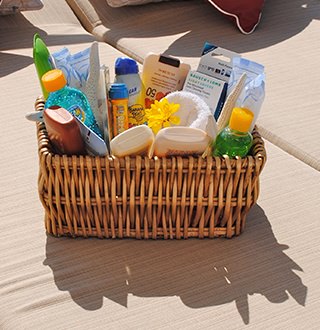
Did you know SPF isn’t the only thing you should look for when choosing a sunscreen? SPF only blocks ultraviolet B (UVB) rays. You also want to protect against ultraviolet A rays (UVA), which increase the risk of skin cancer and cause wrinkles. In this post, we’ll cover what to look for in a sunscreen and how to properly apply sunscreen.
With so many different kinds of sunscreen, how do you know which one is best for you?
1. Check your ingredients
Get a sunscreen with broad-spectrum or multi-spectrum protection against both UVA and UVB rays. Since there is no rating for UVA protection, you should look for the following ingredients:
- benzophenones (oxybenzone, dioxybenzone, sulisobenzone)
- cinnamates (octylmethyl cinnamate and cinoxate)
- salicylates
- titanium dioxide
- zinc oxide
- avobenzone (Parsol 1789)
- ecamsule (Mexoryl SX)
2. SPF
SPF 15 is typically enough for the average person. However, if you have fair skin, a family history of skin cancer, or a medical condition that increases your sensitivity to sunlight, you should look for SPF 30 or higher. While no sunscreen can block all UV rays, SPF 15 keeps out 93% of UVB rays while SPF 30 filters out 97% and SPF 50 blocks 98%.
3. Kid-friendly sunscreen
Chemicals in adult sunscreens can irritate the sensitive skin of children. For kids, it’s best to avoid sunscreens with para-aminobenzoic acid (PABA) and bezephenones (oxybenzone, dioxybenzone, or sulisobenzone). Search for sunscreens with ingredients such as titanium dioxide and zinc oxide that are less likely to irritate the skin. These ingredients protect the skin without being absorbed.
As the American Academy of Pediatrics recommends, it’s best to keep infants under 6 months out of the sun entirely.
How to apply sunscreen
Apply sunscreen 30 minutes before you are in the sun. Use 1 ounce, or around a shot glass full. Many people only apply 1/4 to 1/2 that amount and only receive 10-25% of the benefit. During a full day at the beach, one person should use 1/4 to 1/2 of an 8 oz. bottle.
Easy-to-miss spots include the tips of your ears, your feet, and the back of your legs. To protect your lips, use a UV-protective lip balm frequently.
Reapplying sunscreen

If you’re going to be working out or getting wet, you’ll want to get a sunscreen resistant to sweat and water. This type of sunscreen means that it stays effective for 40 minutes in the water. Very water resistant sunscreen remains effective for 80 minutes.
No matter what kind of sunscreen you have, you should reapply sunscreen every 2 hours or immediately after swimming, toweling off, or after a large amount of sweating.
Make sure you pay attention to the expiration date on your sunscreen – it can become less effective over time. Sunscreen can never fully protect you, so stay in the shade when possible, wear sunglasses and a hat, and stay inside when UV levels are highest, generally between 10 a.m. to 4 p.m. Even on cloudy days, the sun’s UV rays come through and can cause sunburn, so make sure to use sunscreen as often as possible.
Sources: WebMD – What’s the Best Sunscreen, Skin Cancer Foundation – Sunscreens Explained
